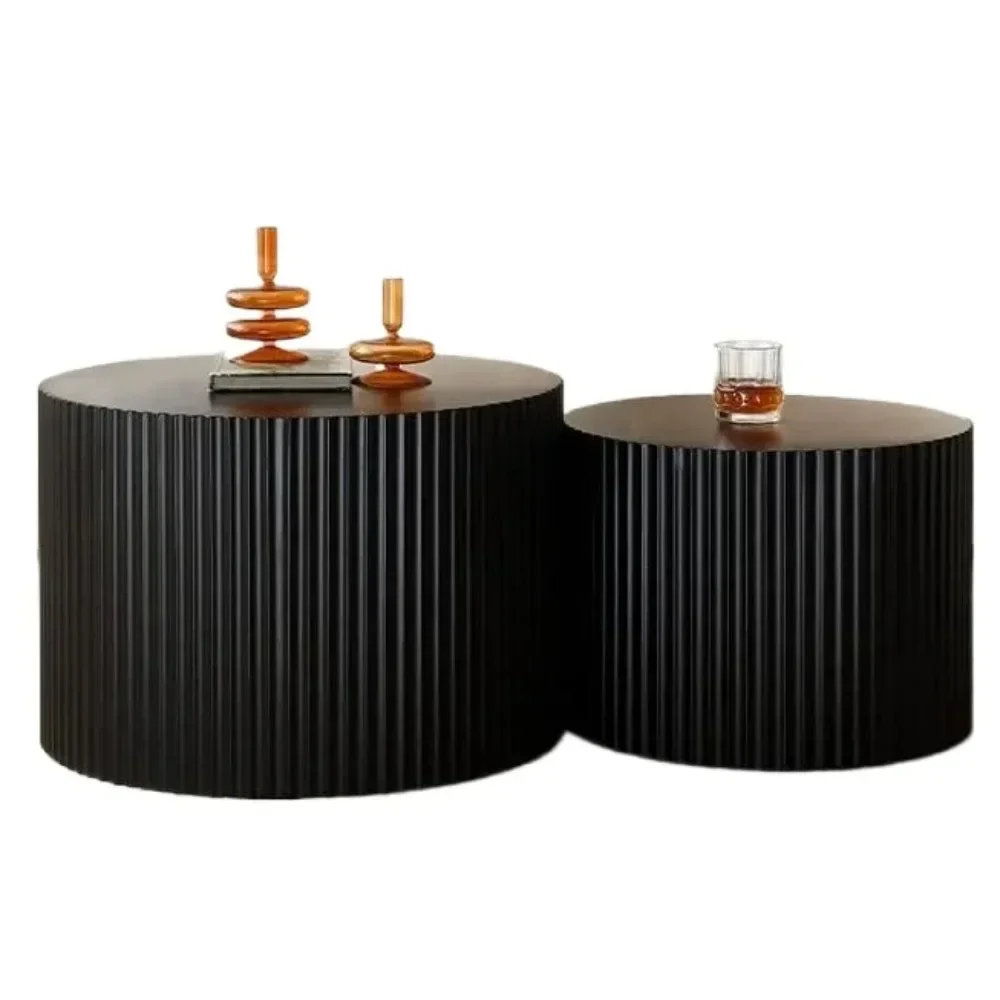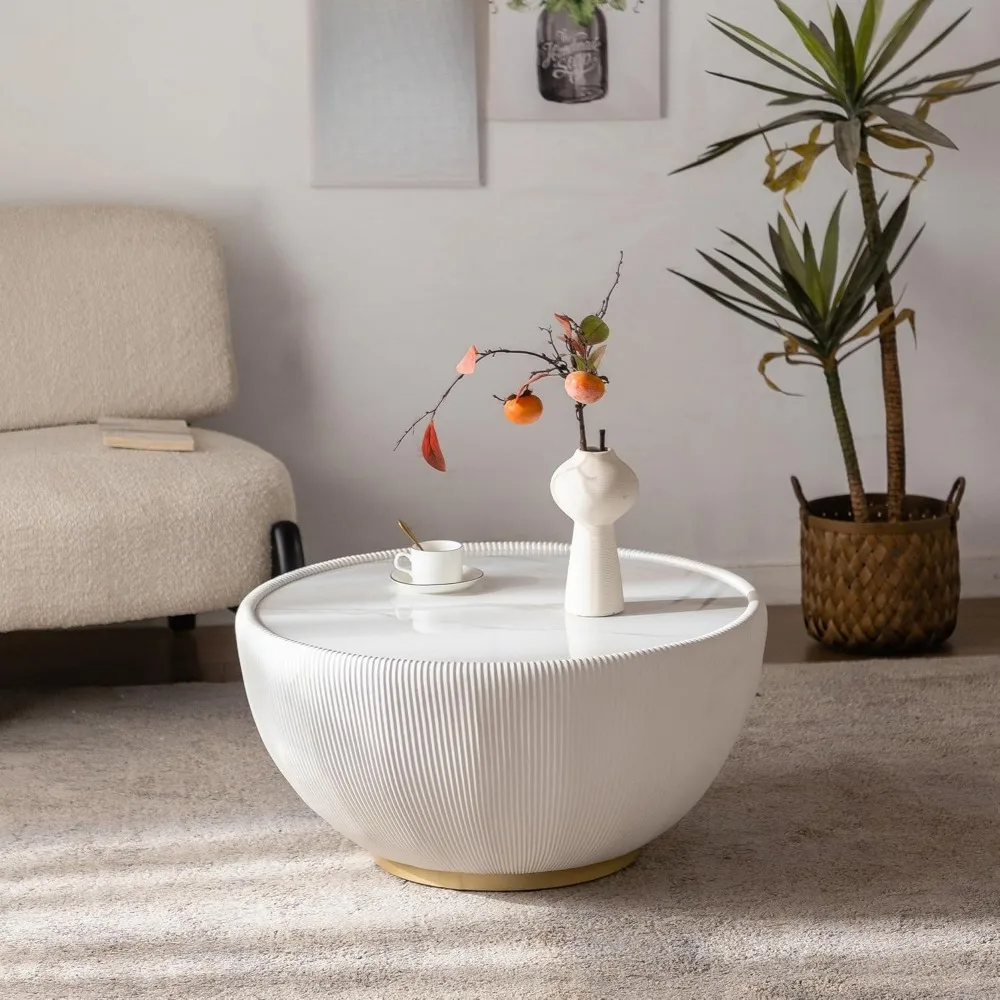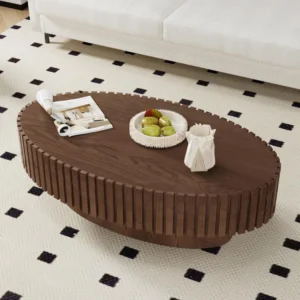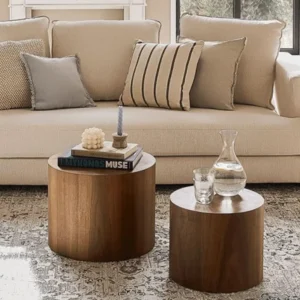Understanding Danish Design Philosophy: The Foundation of Coffee Table Aesthetics
Danish design philosophy stands as one of the most influential movements in furniture design, with principles that continue to inspire creators and homeowners alike. At its core, Danish Modern design embraces several fundamental values that make its coffee tables instantly recognizable and perpetually desirable.
The foundation of Danish design rests on these key principles:
- Minimalism – The belief that beauty emerges from simplicity rather than excess
- Functionality – Every element serves a purpose; nothing exists purely for decoration
- Material integrity – Honest expression of natural materials, particularly fine woods
- Craftsmanship – Meticulous attention to construction details and joinery
Central to Danish design is the concept of “hygge” (pronounced hoo-ga), which roughly translates to a feeling of coziness and contentment. A Danish style coffee table contributes to this atmosphere by creating a warm, inviting focal point in living spaces while maintaining clean, uncluttered lines.
These principles aren’t arbitrary design rules but reflect a deeper cultural approach to creating spaces that balance beauty with everyday practicality. When examining Danish inspired coffee table designs, we see how these philosophical foundations manifest in physical form, creating pieces that feel both timeless and contemporary. The careful consideration of Danish modern coffee table elements reveals an approach to furniture that elevates everyday objects to functional art.
The Defining Aesthetic Principles of Danish Coffee Tables
Danish coffee tables embody a distinctive aesthetic approach that separates them from other furniture traditions. Their enduring appeal stems from adherence to several core principles that guide their design.
The minimalist philosophy of “less is more” stands at the forefront of Danish coffee table design. This manifests through:
- Clean, uninterrupted lines that create visual calm
- Absence of unnecessary ornamentation or decorative elements
- Thoughtful proportions that feel balanced and harmonious
- Emphasis on quality over quantity of design elements
Organic forms play an equally important role in Danish coffee table aesthetics. Unlike strictly geometric styles, Danish tables often feature:
- Gentle curves that soften the overall appearance
- Sculptural elements that create visual interest without overwhelming
- Natural, flowing lines inspired by forms found in nature
- Rounded edges that invite touch and interaction
The principle of form-follows-function means Danish coffee tables never sacrifice usability for appearance. Every design choice serves a practical purpose while still creating beauty. This results in an understated elegance that doesn’t shout for attention but rewards closer inspection with subtle details and perfect proportions.
The beauty of Danish coffee tables’ minimalist design lies in its restraint—knowing exactly what to include and what to leave out. This approach creates pieces that resist passing trends and maintain relevance across decades. Exploring mid-century modern Danish coffee tables reveals how these aesthetic principles create distinctive pieces that enhance living spaces without dominating them.
Premium Materials: The Foundation of Danish Coffee Table Craftsmanship
The choice of materials forms the literal and figurative foundation of Danish coffee table design, with wood serving as the primary medium. Danish craftspeople select woods not just for their structural properties but for their natural beauty, grain patterns, and how they age over time.
The most prevalent woods in Danish coffee table construction include:
Teak – Prized for its rich, warm honey tones and exceptional durability. Teak naturally contains oils that resist moisture and insects, developing a distinctive patina over time that deepens its character.
Oak – Offers remarkable strength with light to medium coloration. Its prominent grain patterns add visual texture while maintaining structural integrity across generations of use.
Rosewood – Features dramatic, often striped grain patterns with deep, rich coloration ranging from chocolate browns to purplish hues. Its density makes it ideal for fine detailing.
Walnut – Provides a gorgeous depth of color from light to dark chocolate brown. Its consistent grain and ability to take a smooth finish make it both beautiful and practical.
Danish coffee tables occasionally incorporate glass elements to complement wooden structures. Clear or lightly smoked glass tops may float above wooden frames, creating visual lightness while maintaining the warm character of the wood base.

The finishing approach for Danish coffee tables typically favors natural oils over heavy lacquers. This treatment enhances the wood’s natural character and allows direct contact with the material. Oil finishes penetrate the wood rather than sitting atop it, highlighting grain patterns while providing protection that’s easily refreshed over time.
The commitment to premium materials extends beyond aesthetics to longevity. Solid wood coffee tables in the Danish tradition are built to last generations, gaining character with each passing year. Similarly, walnut coffee table designs showcase how material selection influences both the visual impact and functional durability of these enduring pieces.
Distinctive Forms and Silhouettes: Shapes That Define Danish Style
Danish coffee tables feature distinct shapes and silhouettes that make them immediately recognizable. These forms aren’t arbitrary but carefully considered for both aesthetic appeal and functional purpose.
Common table shapes include:
- Rectangular and square forms with softened edges that maintain clean lines while avoiding sharp corners
- Circular and oval designs that promote conversation by eliminating hierarchy around the table and creating natural flow
- Organic and amoebic shapes with free-flowing outlines that express mid-century modernism’s more playful side
- Surfboard and elliptical forms that create elegant, elongated profiles perfect for larger seating arrangements
The structural elements of Danish coffee tables are equally distinctive:
- Tapered legs that may be round, squared, or sculptural, creating visual lightness
- Clean horizontal lines that emphasize the table’s profile and refined proportions
- Floating top designs where the surface appears to hover above the base
- Subtle curves that add visual softness without sacrificing the clean overall aesthetic
- Exposed joinery that celebrates craftsmanship rather than hiding construction methods

These shapes aren’t just visually appealing but serve practical purposes. The gentle organic forms and softened edges make Danish coffee tables family-friendly while maintaining their sophisticated appearance. When choosing the perfect coffee table, understanding these distinctive forms helps identify authentic Danish design. The variety within these parameters is evident when exploring mid-century modern round coffee tables, which showcase how Danish designers work within these principles while creating unique expressions.
Functional Features: Practical Elements of Danish Coffee Tables
Functionality stands as a defining characteristic of Danish coffee tables, where practical features enhance rather than compromise aesthetic value. These tables embody the belief that everyday objects should serve their purpose beautifully.
Danish coffee tables frequently incorporate thoughtful storage solutions:
- Lower shelves, either slatted or solid, that provide convenient space for books, magazines, and everyday items
- Discreet drawer systems that maintain clean lines while offering hidden storage for remote controls and other small objects
- Strategic use of cane or woven elements that add texture while creating semi-concealed storage areas
The adaptability of Danish coffee tables makes them remarkably versatile across different interior styles. Their clean lines complement contemporary spaces, while their warm wood tones and organic forms soften minimalist environments. This adaptability extends to practical considerations like size and scale, with many Danish designs considering space efficiency through:
- Nesting tables that can be separated when needed or combined to save space
- Proportions that balance presence without overwhelming smaller living spaces
- Heights carefully calibrated for comfortable use with various seating arrangements

These functional elements demonstrate how Danish design enhances daily life through thoughtful details. Glass-top coffee tables with wooden shelves exemplify this functional approach, creating visual lightness while maintaining storage capability. Learning about Danish coffee table construction and craft reveals how these functional elements are integrated seamlessly into the overall design.
Mid-Century Modern Solid Wood Coffee Tables, Mid-Century Modern Teak Coffee Tables
$879.95 Select options This product has multiple variants. The options may be chosen on the product pageMid-Century Modern Danish Coffee Tables, Mid-Century Modern Oval Coffee Tables, Mid-Century Modern Solid Wood Coffee Tables
$390.05 Select options This product has multiple variants. The options may be chosen on the product pageMid-Century Modern Glass Top Coffee Tables, Mid-Century Modern Glass Top Side & End Tables
$460.58 Select options This product has multiple variants. The options may be chosen on the product pageMid-Century Modern Glass Top Coffee Tables, Mid-Century Modern Vintage Coffee Tables, Mid-Century Modern Vintage Side & End Tables
$725.36 Select options This product has multiple variants. The options may be chosen on the product pageMid-Century Modern Oval Coffee Tables, Mid-Century Modern Solid Wood Coffee Tables
$679.56 Select options This product has multiple variants. The options may be chosen on the product pageMid-Century Modern Nesting Table Sets, Mid-Century Modern Round Coffee Tables
$462.57 Select options This product has multiple variants. The options may be chosen on the product page
Craftsmanship and Quality Standards: The Danish Difference
The exceptional craftsmanship of Danish coffee tables represents one of their most distinguishing characteristics. This commitment to quality stems from a long tradition of handcraftsmanship that prioritizes durability and excellence in every detail.
Danish coffee tables typically feature superior construction techniques that ensure longevity:
- Solid wood construction that avoids veneers on primary surfaces
- Premium joinery methods like dovetail joints for drawers, mortise and tenon connections, and finger joints
- Careful attention to grain direction and wood movement to prevent warping or splitting over time
- Hand-finished surfaces that bring out the natural beauty of the wood while providing protection
The “honest use of materials” philosophy means Danish craftspeople work with—rather than against—the natural properties of their materials. Wood grain is showcased rather than hidden, and construction methods celebrate rather than conceal how pieces come together.
At Hearth Forms, we appreciate how this commitment to craftsmanship creates heirloom-quality pieces meant to last generations. Quality indicators in Danish coffee tables include consistent grain matching, smooth drawer operation, perfectly flush joints, and an overall sense of solidity without excessive weight.
The superior construction of teak coffee tables demonstrates this dedication to craft, with techniques that have remained essentially unchanged for generations. This combination of traditional methods with modern design creates pieces that feel both timeless and contemporary.
Distinguishing Danish Coffee Tables from Similar Styles
While Danish coffee tables share characteristics with other design movements, several distinct features set them apart. Understanding these differences helps identify authentic Danish style among similar aesthetics.
When comparing Danish design to broader Scandinavian furniture:
- Danish pieces typically feature warmer wood tones (teak, rosewood) versus the lighter pine and birch common in other Scandinavian countries
- Danish design places greater emphasis on sculptural elements and cabinetmaking traditions
- Danish furniture often shows more organic influence in form while maintaining clean lines
Contrasting Danish with American Mid-Century Modern reveals additional distinctions:
- Danish pieces focus on handcrafted quality versus the more industrial materials sometimes found in American designs
- Danish coffee tables typically showcase natural material expression rather than the sometimes bolder forms of American mid-century pieces
- Danish design tends toward subtlety and understatement compared to more dramatic American interpretations
Specific identifiable hallmarks of Danish coffee tables include:
- Distinctive leg styles, particularly the tapered leg with slight outward angle
- Characteristic joinery methods like visible tenons and finger joints
- Wood selection that favors premium hardwoods with visible grain
- Proportions that create visual lightness despite solid construction
The differences between Scandinavian and Danish coffee table design reveal cultural influences that shaped each tradition. Similarly, understanding mid-century versus mid-century modern furniture helps distinguish authentic Danish pieces from similar styles.
Influential Danish Coffee Table Designers: Masters of the Craft
The distinctive character of Danish coffee tables owes much to the influential designers who established and refined this aesthetic. These masters combined artistic vision with practical craftsmanship to create enduring pieces.
Several designers made particularly notable contributions to Danish coffee table design:
Hans Wegner – Known for organic functionality, masterful woodworking, and pieces that balance sculptural form with everyday usability. His coffee tables feature exceptional joinery and thoughtfully tapered legs.
Finn Juhl – Created sculptural, almost artistic pieces with floating elements and organic shapes. His tables often feature surprising combinations of materials and bold, curving forms.
Børge Mogensen – Emphasized functional simplicity with honest construction and democratic design principles. His coffee tables showcase practical storage solutions and sturdy proportions.
Grete Jalk – Developed innovative molded plywood techniques resulting in graceful, flowing forms. Her tables demonstrate how industrial processes can create organic shapes while maintaining warmth.
Ole Wanscher – Created refined, elegant pieces with classical influences and exceptional attention to proportion. His coffee tables often feature slender profiles with sophisticated detailing.
These designers established principles that continue to influence contemporary furniture creation. Their collective impact defined what we now recognize as Danish coffee table aesthetics: the perfect balance of form and function, the celebration of natural materials, and the emphasis on human-centered design.
Learning to identify Danish-inspired coffee tables involves recognizing the signature elements these influential designers established, from distinctive leg shapes to characteristic joinery methods.
Integrating Danish Coffee Tables: Contemporary Applications
Danish coffee tables possess remarkable versatility that allows them to enhance various interior styles. Their clean lines and warm materials create natural harmony in modern living spaces.
These tables complement multiple design approaches:
- In minimalist interiors, a Danish coffee table adds warmth and organic elements that soften stark simplicity
- For eclectic spaces, these tables provide a grounding center point that balances more dramatic pieces
- In traditional settings, Danish coffee tables introduce contemporary notes without creating jarring contrasts
- For small spaces, their typically modest proportions and visual lightness prevent overcrowding
For optimal placement, position Danish coffee tables about 18 inches from seating to allow comfortable access while maintaining conversation flow. Their height should allow easy use from surrounding furniture while avoiding awkward reaching.
Danish coffee tables can serve as either focal points or complementary elements depending on the overall design scheme. A distinctive organic shape might become the room’s centerpiece, while a simpler rectangular design could support other statement pieces.
The Danish coffee table design guide offers additional insights on integrating these pieces into modern spaces, balancing their historical significance with contemporary applications.
Why Danish Coffee Tables Remain Enduringly Relevant
Danish coffee tables continue to resonate with contemporary homeowners and designers alike because they solve furniture challenges in ways that feel both timeless and fresh. Their enduring appeal stems from a unique combination of qualities that transcend passing trends.
The balance of aesthetic appeal, functionality, and quality makes Danish coffee tables perpetually desirable. Unlike furniture that follows momentary fashions, these pieces embody design principles that remain relevant regardless of changing decorative styles. Their clean lines feel contemporary while their warm materials create inviting spaces.
Danish coffee tables demonstrate that good design doesn’t need to be replaced seasonally. Their continued relevance speaks to design choices that prioritized human needs and natural beauty over fleeting trends. As homes increasingly become multi-purpose spaces, the practical functionality and visual clarity of Danish design feel more appropriate than ever.
This timeless quality makes Danish coffee tables wise investments rather than temporary solutions. The vintage table design characteristics that make Danish pieces so distinctive continue to influence contemporary furniture, demonstrating their lasting impact on our understanding of what makes good design.
How to Select an Authentic Danish Style Coffee Table
Finding an authentic Danish style coffee table requires attention to several key details that distinguish genuine design from superficial imitation. Whether seeking vintage pieces or contemporary interpretations, these guidelines help ensure quality selection.
When evaluating potential purchases, consider these quality markers:
- Solid wood construction throughout, especially for primary surfaces and structural elements
- Smooth, precise joinery with tight-fitting connections
- Even finish application that enhances rather than conceals the wood grain
- Consistent design language where all elements relate proportionally
- Appropriate weight that suggests solid construction without excessive heaviness
Proportions and scale greatly impact how a coffee table functions in your space:
- Height should allow comfortable use from surrounding seating (typically 16-18 inches)
- Length generally measures approximately two-thirds the length of your primary sofa
- Width should allow at least 18 inches of clearance from all surrounding furniture
- Overall scale should feel balanced within the room—neither too substantial nor too delicate
Material assessment provides important clues about quality:
- Natural variations in wood grain indicate solid wood rather than veneer
- Even coloration throughout (or intentional contrasting elements)
- Smooth transitions between components
- Quality hardware that operates smoothly
Exploring walnut coffee tables provides excellent examples of how these quality indicators manifest in well-crafted pieces. By applying these guidelines, you can select authentic Danish style coffee tables that will provide both beauty and function for years to come.







